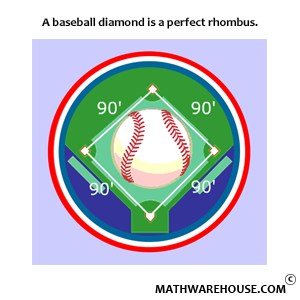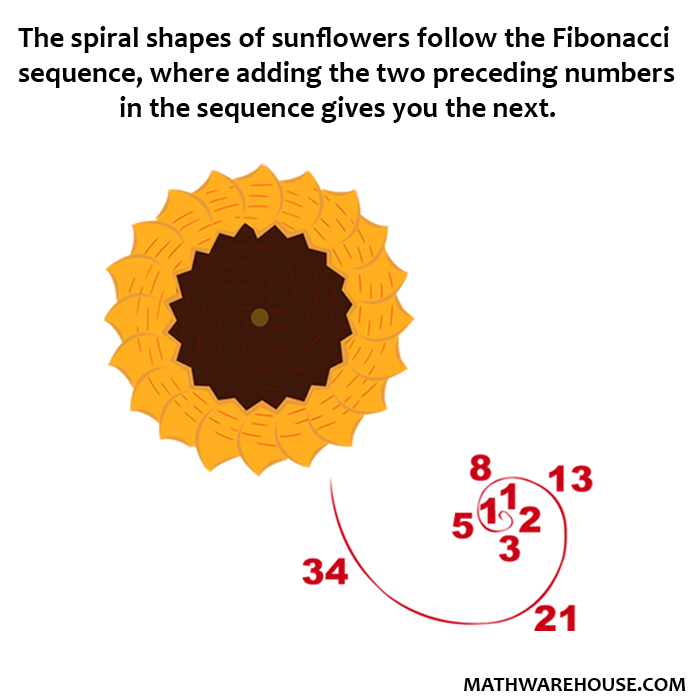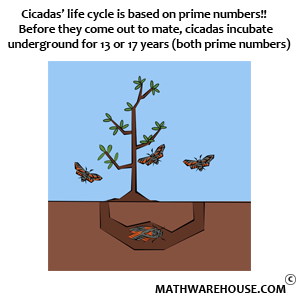Quick Overview
- $$\displaystyle \frac d {dx}\left(\ln x\right) = \frac 1 x$$
- $$\displaystyle \frac d {dx}\left(\arcsin x\right) = \frac 1 {\sqrt{1 - x^2}}$$
- $$\displaystyle \frac d {dx}\left(\arctan x\right) = \frac 1 {1 + x^2}$$
- $$\displaystyle \frac d {dx}\left(\arcsec x\right) = \frac 1 {|x|\sqrt{x^2-1}}$$
- At associated points, the value of $$f'$$ and $$\left(f^{-1}\right)'$$ are reciprocals.
Examples
Example 1
Find the derivative of $$y = \ln x$$.
Step 1Recall that $$e^{\ln x} = x$$. Now, differentiate both sides of this equation.
$$ \begin{align*} \frac d {dx}\left(e^{\ln x}\right) & = \frac d {dx}(x)\\[6pt] e^{\ln x}\cdot \frac d {dx}\left(\ln x\right) & = 1\\[6pt] \end{align*} $$
Step 2Solve the equation for $$\frac d {dx}(\ln x)$$ and simplify.
$$ \begin{align*} e^{\ln x}\cdot \frac d {dx}\left(\ln x\right) & = 1\\[6pt] \frac d {dx}\left(\ln x\right) & = \frac 1 {e^{\ln x}}\\[6pt] \frac d {dx}\left(\ln x\right) & = \frac 1 x \end{align*} $$
Answer$$\displaystyle \frac d {dx}\left(\ln x\right) = \frac 1 x$$
Example 2
Find the derivative of $$y = \sin^{-1}(x)$$.
Step 1Recall that $$\sin\left(\sin^{-1} x \right) = x$$. Now, differentiate both sides of the equation.
$$ \begin{align*} \frac d {dx}\left(\sin(\sin^{-1} x)\right) & = \frac d {dx} (x)\\[6pt] \cos(\sin^{-1} x)\cdot \frac d {dx}\left(\sin^{-1} x\right) & = 1 \end{align*} $$
Step 2Solve the equation for $$\frac d {dx}(\sin^{-1} x)$$
$$ \begin{align*} \cos(\sin^{-1} x)\cdot \frac d {dx}\left(\sin^{-1} x\right) & = 1\\[6pt] \frac d {dx}\left(\sin^{-1} x\right) & = \frac 1 {\cos(\sin^{-1} x)} \end{align*} $$
Step 3Recall that $$\sin^{-1} x = \theta$$ is the angle where $$\sin \theta = \frac x 1$$. Find the cosine of this angle.
On a right-triangle, the cosine is $$\frac{\mbox{adjacent}}{\mbox{hypotenuse}}$$. We can find the adjacent side using the pythagorean theorem.

From this, we can see that $$\cos\theta = \frac {\sqrt{1-x^2}} 1 = \sqrt{1-x^2}$$.
Step 4Finish evaluating the derivative.
$$ \frac d {dx}\left(\sin^{-1} x\right) = \frac 1 {\cos(\sin^{-1} x)} = \frac 1 {\cos(\theta)} = \frac 1 {\sqrt{1 - x^2}} $$
Answer$$\displaystyle \frac d {dx}\left(\sin^{-1} x\right) = \frac 1 {\sqrt{1 - x^2}}$$.
Example 3
Find $$\displaystyle \frac d {dx}\left(\tan^{-1} x\right)$$.
Step 1Recall that $$\tan\left(\tan^{-1} x\right) = x$$. Differentiate both sides of this equation.
$$ \begin{align*} \frac d {dx}\left(\tan(\tan^{-1} x)\right) & = \frac d {dx} (x)\\[6pt] \sec^2\left(\tan^{-1} x\right)\cdot \frac d {dx}\left(\tan^{-1} x\right) & = 1 \end{align*} $$
Step 2Solve the equation for $$\frac d {dx}\left(\tan^{-1} x\right)$$
$$ \begin{align*} \sec^2\left(\tan^{-1} x\right)\cdot \frac d {dx}\left(\tan^{-1} x\right) & = 1\\[6pt] \frac d {dx}\left(\tan^{-1} x\right) & = \frac 1 {\sec^2\left(\tan^{-1} x\right)} \end{align*} $$
Step 3Recall that $$\tan^{-1} x = \theta$$ is the angle where $$\tan \theta = \frac x 1$$. Find the secant of this angle.
If we sketch a right triangle and label the sides so $$\tan \theta = \frac x 1$$, we can then use the pythagorean theorem to find the length of the third side.

We're looking for the $$\sec \theta$$ which, on a right-triangle is $$\frac{\mbox{hypotenuse}}{\mbox{adjacent}}$$.
$$\sec \theta = \frac{\sqrt{1+x^2}} 1 = \sqrt{x^2 + 1}$$
Step 4Finish evaluating the derivative.
$$ \begin{align*} \frac d {dx}\left(\tan^{-1} x\right) & = \frac 1 {\sec^2\left(\tan^{-1} x\right)}\\[6pt] & = \frac 1 {\sec^2\left(\theta\right)}\\[6pt] & = \frac 1 {\left(\sec \theta \right)^2}\\[6pt] & = \frac 1 {\left(\sqrt{1+x^2}\right)^2}\\[6pt] & = \frac 1 {1+x^2} \end{align*} $$
Answer$$ \displaystyle \frac d {dx}\left(\tan^{-1} x\right) = \frac 1 {1+x^2} $$
Example 4
Find $$\displaystyle \frac d {dx}\left(\sec^{-1} x\right)$$.
Step 1Recall that $$\sec\left(\sec^{-1} x\right) = x$$. Differentiate this equation.
$$ \begin{align*} \frac d {dx} \left(\sec(\sec^{-1} x)\right) & = \frac d {dx} (x)\\[6pt] \sec\left(\sec^{-1} x\right)\tan\left(\sec^{-1} x\right)\cdot \frac d {dx}\left(\sec^{-1} x\right) & = 1 \end{align*} $$
Step 2Solve the equation for $$\frac d {dx}\left(\sec^{-1} x\right)$$.
$$ \begin{align*} \sec\left(\sec^{-1} x\right)\tan\left(\sec^{-1} x\right)\cdot \frac d {dx}\left(\sec^{-1} x\right) & = 1\\[6pt] \frac d {dx}\left(\sec^{-1} x\right) & = \frac 1 {\sec\left(\sec^{-1} x\right)\tan\left(\sec^{-1} x\right)} \end{align*} $$
We know that $$\sec(\sec^{-1} x) = x$$, so the derivative at this point becomes
$$ \frac d {dx}\left(\sec^{-1} x\right) = \frac 1 {x\,\tan\left(\sec^{-1} x\right)} $$
Step 3We know that $$\sec^{-1} x = \theta$$ is the angle where $$\sec \theta = \frac x 1$$. Use right-triangles to determine $$\tan\theta$$.
There are two cases to consider: when $$x$$ is positive, and when $$x$$ is negative.
Case 1: $$x$$ is Positive

When $$x$$ is positive, $$\tan \theta = \sqrt{x^2-1}$$.
This means
$$\frac d {dx}\left(\sec^{-1}x\right) = \frac 1 {x\sqrt{x^2-1}}$$
Case 2: $$x$$ is Negative

When $$x$$ is negative, $$\tan\theta = -\sqrt{x^2-1}$$.
This means
$$\frac d {dx}\left(\sec^{-1}x\right) = \frac 1 {-x\sqrt{x^2-1}}$$
but since $$x<0$$ we know $$-x>0$$
In both cases, the square-root in the denominator is multiplied by a positive value. We can indicate this succinctly by using the absolute value.
$$\frac d {dx}\left(\sec^{-1}x\right) = \frac 1 {|x|\sqrt{x^2-1}}$$
The Derivatives of Inverse Functions Theorem
Recall that when we compose a function and its inverse we have $$f\left( f^{-1}(x)\right) = x$$. If we differentiate both sides of this equation (using the chain rule on the left side) we get the following.
$$ \begin{align*} \frac d {dx}\left[f\left(f^{-1}(x)\right)\right] & = \frac d {dx} (x)\\[6pt] % f'\left(f^{-1}(x)\right)\cdot \left(f^{-1}\right)'(x) & = 1 \end{align*} $$
When we solve this equation for $$\left(f^{-1}\right)'(x)$$ we get a formula for finding derivatives of inverse functions.
$$ \left(f^{-1}\right)'(x) = \frac 1 {f'\left(f^{-1}(x)\right)} $$
Example 5
Suppose $$f(8) = 11$$ and $$f'(8) = 4$$. What is the value of $$\left(f^{-1}\right)'(11)$$?
Step 1Since $$(8,11)$$ is a point on the graph of $$f$$, we know $$(11,8)$$ is on the graph of $$f^{-1}$$. Then the derivatives at these two point must be reciprocals, so
$$ \left(f^{-1}\right)'(11) = \frac 1 4 $$

Practice Problems
Convert the logarithm to the natural log using the change of base formula.
$$\frac d {dx} \left(\log_b x\right) = \frac d {dx}\left(\frac{\ln x}{\ln b}\right)$$
Since $$\ln b$$ is a constant, factor it out.
$$ \frac d {dx}\left(\frac{\ln x}{\ln b}\right) = \frac 1 {\ln b}\,\cdot\frac d {dx}\left(\ln x\right) $$
Use the result from Example 1 to differentiate the natural log.
$$ \frac 1 {\ln b}\,\cdot\frac d {dx}\left(\ln x\right) = \frac 1 {\ln b} \cdot \frac 1 x = \frac 1 {(\ln b) x} $$
$$\displaystyle \frac d {dx}\left(\log_b x\right) = \frac 1 {(\ln b) x}$$
Recall that $$\cos(\cos^{-1} x) = x$$. Differentiate this equation.
$$ \begin{align*} \frac d {dx}\left(\cos(\cos^{-1} x)\right) = \frac d {dx} (x)\\[6pt] -\sin(\cos^{-1} x)\cdot \frac d {dx}\left(\cos^{-1} x\right) = 1 \end{align*} $$
Solve the equation for $$\frac d {dx}\left(\cos^{-1} x\right)$$.
$$ \frac d {dx}\left(\cos^{-1} x\right) = \frac 1 {-\sin(\cos^{-1} x)} $$
Recall that $$\cos^{-1} x = \theta$$ is the angle where $$\cos \theta = \frac x 1$$. Find the sine of this angle.

We figure out the length of the third side using the pythagorean theorem. From this we can determine that $$\sin\theta = \sqrt{1-x^2}$$.
Finish evaluating the derivative.
$$ \begin{align*} \frac d {dx}\left(\cos^{-1} x\right) & = \frac 1 {-\sin(\cos^{-1} x)}\\[6pt] & = \frac 1 {-\sin(\theta)}\\[6pt] & = \frac 1 {-\sqrt{1-x^2}} \end{align*} $$
$$\displaystyle \frac d {dx}\left(\cos^{-1} x\right) = -\frac 1 {\sqrt{1-x^2}}$$
Recall that $$\cot(\cot^{-1} x) = x$$. Differentiate this equation.
$$ \begin{align*} \frac d {dx}\left(\cot(\cot^{-1} x)\right) & = \frac d {dx}(x)\\[6pt] -\csc^2\left(\cot^{-1} x\right)\cdot \frac d {dx}\left(\cot^{-1} x\right) & = 1 \end{align*} $$
Solve this equation for $$\frac d {dx}\left(\cot^{-1} x\right)$$.
$$ \frac d {dx}\left(\cot^{-1} x\right) = \frac 1 {-\csc^2\left(\cot^{-1} x\right)} $$
We know that $$\cot^{-1} x = \theta$$ is the angle where $$\cot \theta = \frac x 1$$. Find the cosecant of this angle.

After using the Pythagorean theorem to find the third side, we can now see that $$\csc \theta = \sqrt{1+x^2}$$.
Finish evaluating the derivative.
$$ \begin{align*} \frac d {dx}\left(\cot^{-1} x\right) & = \frac 1 {-\csc^2\left(\cot^{-1} x\right)}\\[6pt] & = \frac 1 {-\csc^2 \theta}\\[6pt] & = \frac 1 {-(\csc \theta)^2}\\[6pt] & = \frac 1 {-(\sqrt{1+x^2})^2}\\[6pt] & = \frac 1 {-(1+x^2)} \end{align*} $$
$$ \displaystyle \frac d {dx}\left(\cot^{-1} x\right) = -\frac 1 {1+x^2} $$
Recall that $$\csc(\csc^{-1} x) = x$$. Differentiate this equation.
$$ \begin{align*} \frac d {dx}\left(\csc(\csc^{-1} x)\right) & = \frac d {dx}(x)\\[6pt] -\csc\left(\csc^{-1} x\right)\cot\left(\csc^{-1} x\right)\cdot \frac d {dx}\left(\csc^{-1} x\right) & = 1 \end{align*} $$
Solve this equation for $$\frac d {dx}\left(\csc^{-1} x\right)$$.
$$ \frac d {dx}\left(\csc^{-1} x\right) = \frac 1 {-\csc\left(\csc^{-1} x\right)\cot\left(\csc^{-1} x\right)} $$
We know that $$\csc(\csc^{-1} x) = x$$ so our derivative becomes
$$\frac d {dx}\left(\csc^{-1} x\right) = \frac{-1}{x\cot\left(\csc^{-1} x\right)}$$
We know that $$\csc^{-1} x = \theta$$ is the angle where $$\csc \theta = \frac x 1$$. We need to find $$\cot \theta$$. There are two cases we need to examine: when $$x$$ is positive, and when $$x$$ is negative.
Case 1: $$x$$ is Positive

When $$x$$ is positive, $$\cot \theta = \sqrt{x^2 -1}$$.
This means
$$\frac d {dx}\left(\csc^{-1}x\right) = \frac{-1}{x\sqrt{x^2-1}}$$
Case 2: $$x$$ is Negative

When $$x$$ is negative, $$\cot\theta = -\sqrt{x^2-1}$$.
This means
$$\frac d {dx}\left(\csc^{-1}x\right) = \frac{-1}{-x\sqrt{x^2-1}}$$
but since $$x<0$$ we know $$-x>0$$
In both cases, the square-root in the denominator is multiplied by a positive value. We can express this more succinctly by using the absolute value.
$$\frac d {dx}\left(\csc^{-1}x\right) = \frac{-1}{|x|\sqrt{x^2-1}}$$
$$\displaystyle \frac d {dx}\left(\csc^{-1}x\right) = \frac{-1}{|x|\sqrt{x^2-1}}$$
Since $$f(3) = 2$$, we know $$f^{-1}(2) = 3$$. This means $$f'(3)$$ and $$(f^{-1})'(2)$$ are reciprocals. Since $$f'(3) = \frac 1 5$$, we know $$(f^{-1})'(2) = 5$$.
$$(f^{-1})'(2) = 5$$
Since $$f(15) = -7$$ then $$f^{-1}(-7) = 15$$. This means $$f'(15)$$ and $$(f^{-1})'(-7)$$ are reciprocals. Since $$f'(15)=6$$, we know $$(f^{-1})'(-7) = \frac 1 6$$.
$$\displaystyle (f^{-1})'(-7)= \frac 1 6$$


















